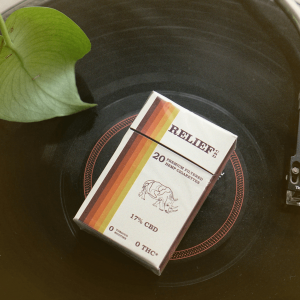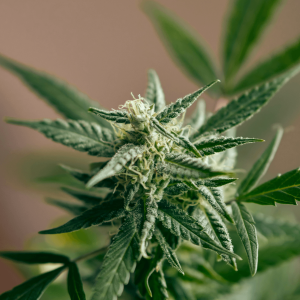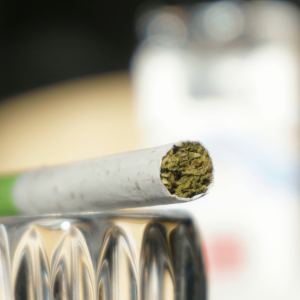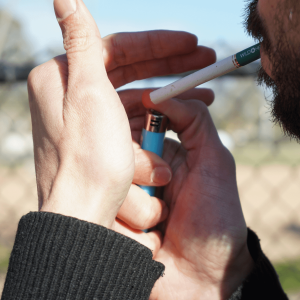Okay, we get it… you hear the word ‘cigarettes’ and you may be immediately turned off — but stick with us! Hemp cigarettes have rapidly transitioned from being a subject of taboo to becoming a trending choice for those seeking an alternative to traditional tobacco products.
Made from the hemp plant, which is a variety of the cannabis sativa species, these cigarettes contain CBD (cannabidiol) and minimal amounts of THC (tetrahydrocannabinol), making them a non-psychoactive option.
Historically, organic hemp has been utilized practically since the beginning of time, with early uses dating back to ancient civilizations for its fiber, seeds, and oil in a variety of applications including textiles, nutrition, and even medicinal practices.
This blog will provide a comprehensive overview of hemp cigarettes, tracing their history, discussing their legal status and health implications, and exploring why they are gaining popularity. By examining the role of hemp in contemporary society and debunking common misconceptions, we’ll reveal how hemp cigarettes are carving a niche within the wellness and natural product industries.
What are Hemp Cigarettes?
CBD hemp cigarettes, often regarded as a healthier alternative to traditional cigarettes, are made from the flowers of the hemp plant, which is a variety of the Cannabis sativa species. Unlike traditional tobacco cigarettes, hemp cigarettes contain CBD (cannabidiol), a compound known for its therapeutic benefits, and they have only trace amounts of THC (tetrahydrocannabinol) — often less than 0.3%. This minimal THC content ensures that smoking hemp cigarettes does not produce the intense psychoactive effects associated with marijuana.
The production of a CBD cigarette involves the harvesting of hemp flower, which is then dried, cured, and rolled into cigarettes. This process closely mirrors that of producing traditional tobacco products, yet the key distinction lies in the substance being consumed. While tobacco cigarettes contain nicotine and a multitude of harmful chemicals known for causing health issues, hemp cigarettes offer a non-addictive alternative that leverages the potential health benefits of CBD, including stress relief and inflammation reduction.
Comparatively, while both types of cigarettes involve the act of smoking, the content and potential health implications differ significantly. Traditional tobacco products are well-documented for their health risks, including lung cancer, heart disease, and stroke. Hemp cigarettes, on the other hand, are emerging as a component of the wellness industry, with ongoing research into their possible health benefits.
It’s important to note, however, that smoking any substance carries a risk to lung health, and individuals should seek the most current scientific research when considering hemp cigarettes as an alternative to tobacco smoking.

Hemp vs. Marijuana: Understanding the Differences
It’s important to understand the difference between hemp and marijuana, mainly because of their chemical makeup and how they affect the body. Even though both come from the cannabis sativa plant, they’re very different in terms of THC content. Hemp has very little THC, less than 0.3% by dry weight, as defined by federal law.
Marijuana, on the other hand, has much more THC, ranging from 5% to over 30%. This high level of THC causes the significant psychoactive effects associated with marijuana use. Marijuana is used mostly for recreational or medicinal purposes, where it’s legal.
When it comes to how they affect the body, CBD from hemp is being studied for its potential to help with anxiety, pain, and sleep issues, all without the high THC. Marijuana, because of its high THC content, can change how you feel and think, possibly helping with pain and nausea but also causing altered perception and mood changes.
Benefits of Hemp Cigarettes
Hemp cigarettes are becoming increasingly popular, not just as an alternative to traditional tobacco cigarettes but also because of their potential benefits. While research is still ongoing, early studies and anecdotal evidence suggest that hemp cigarettes may offer several advantages:
Potential Health Benefits:
- May help in reducing anxiety and stress without the psychoactive effects of THC.
- Contains anti-inflammatory properties which could aid in pain relief.
- Could improve sleep quality due to CBD’s relaxing effects on the nervous system.
- Offers a non-addictive alternative to nicotine, potentially reducing the risk of dependency.
Role in Smoking Cessation:
- Provides a familiar ritual for smokers looking to quit smoking tobacco without the harmful effects of nicotine.
- The act of smoking hemp cigarettes can help manage oral fixation, a common challenge for those trying to quit a nicotine addiction.
- May reduce withdrawal symptoms associated with quitting nicotine, such as irritability and anxiety.
- Allows for a smoother transition for smokers by replicating the smoking experience without the addictive substance.
How are Hemp Cigarettes Made?
The manufacturing process of the best hemp cigarettes is a blend of traditional agricultural practices and modern processing techniques, ensuring the final product is both natural and compliant with legal standards.
Here’s an overview of the step-by-step process from farming to the final product.
Step One: Farming of Hemp
Hemp cultivation begins with the selection of quality hemp seeds that are high in CBD and low in THC, adhering to the legal requirement of less than 0.3% THC content.
Farmers plant these seeds in well-aerated, fertile soil, typically in late spring or early summer, ensuring that the plants have sufficient space to flourish. Throughout the growing season, hemp requires minimal pesticides and herbicides, making it an eco-friendly crop.
Harvesting occurs once the plants reach maturity and the CBD content is at its peak, usually in the late summer or early fall.
Step Two: Processing of Hemp
After harvesting, the next phase is the drying and curing of the hemp flowers. This process is crucial for preserving the integrity of the CBD and other beneficial cannabinoids. The harvested hemp plants are hung upside down in a controlled environment with proper ventilation to ensure even drying.
Once the flowers are adequately dried, they undergo curing, a process that further enhances the flavor, aroma, and overall quality of the hemp.
Step Three: Manufacturing Process of Hemp Cigarettes
Once cured, the hemp flowers are ready for the manufacturing of cigarettes. The first step is to grind the flowers to a consistent size that’s suitable for rolling.
This ground hemp is then carefully measured and filled into rolling papers, typically made from hemp to maintain the product’s purity and sustainability. The rolling process can be done manually or with the assistance of machines for larger production scales.
Finally, the hemp cigarettes are packaged, often with biodegradable materials, to further emphasize the product’s natural and eco-conscious ethos.
This meticulous process from farm to finished product ensures that hemp cigarettes offer a natural, non-addictive alternative to traditional tobacco cigarettes, aligning with consumers’ growing preference for wellness-oriented products.

The Legal Landscape
The legal status of hemp cigarettes varies significantly across different regions, largely influenced by evolving regulations surrounding hemp and CBD products.
In the United States, the 2018 Farm Bill marked a pivotal shift, legalizing hemp with THC levels below 0.3% on a dry weight basis. This legislation effectively distinguished legal hemp from marijuana, which remains federally illegal despite its legalization in several states for medical and recreational purposes.
Following the 2018 Farm Bill, hemp production and the sale of hemp-derived products, including hemp cigarettes, became permissible under federal law, leading to a burgeoning market. However, state laws can differ, and some states have their own regulations regarding the production, sale, and consumption of hemp and CBD products.
Internationally, the legal landscape is even more varied, with some countries fully embracing hemp products under similar low-THC requirements, while others maintain strict prohibitions against all forms of cannabis, including hemp.
These changes in legislation have not only opened up new opportunities for the hemp industry but also pose ongoing challenges for businesses navigating the complex web of federal, state, and international laws. Consequently, consumers and manufacturers alike must stay informed about the legal status of hemp cigarettes and other CBD products in their respective regions to ensure compliance and avoid potential legal implications.

How to Choose the Right Hemp Cigarettes for You
Selecting the right hemp cigarettes can be a daunting task given the wide array of brands and products available on the market. To ensure you make an informed decision, it’s essential to consider several factors that contribute to the quality and safety of the product.
Tips on Selecting Brands and Products:
- Research the Brand: Look for companies with a strong reputation for quality and transparency. Brands that provide detailed information about their farming practices, manufacturing processes, and lab results for their products are often more reliable. Rest assured that any and all hemp cigarettes on the Hyperwolf platform are pure, tested, and trustworthy.
- Read Reviews: Customer reviews can provide valuable insights into the effectiveness and overall experience of the product. However, keep an eye out for genuine, unbiased reviews.
- Check for Third-Party Lab Testing: Reputable hemp cigarette brands will have their products tested by independent labs to verify the CBD content and ensure they are free from harmful contaminants like pesticides, heavy metals, and mold. These results should be readily accessible to consumers.
What to Look for in Quality and Safety:
- Hemp Source: The quality of hemp cigarettes significantly depends on the quality of the hemp used. Look for products made from organically grown hemp, free from pesticides and herbicides.
- THC Content: Legally, hemp cigarettes must contain less than 0.3% THC. Verify the product complies with this requirement to avoid psychoactive effects or legal issues.
- Ingredients: High-quality hemp cigarettes should contain pure hemp with no additives. Some products might include natural flavors or herbs, so check the ingredients list if you have preferences or allergies.
- Packaging: Good packaging not only protects the product from damage and contamination but also provides information about the product’s origin, manufacturing date, and batch number. This information can be crucial for tracing the product’s quality.
By taking these factors into account, you can confidently select hemp cigarettes that meet your personal preferences and safety requirements, ensuring a positive and health-conscious smoking experience.

The Future of Hemp Cigarettes: Industry Trends and Future Prospects
The hemp cigarettes industry is poised for significant growth, driven by evolving public perceptions and potential regulatory changes. As awareness of the health and environmental benefits of hemp products increases, so does the demand for natural and non-addictive alternatives to traditional tobacco cigarettes. Industry trends suggest an expansion into new markets and innovation in product offerings, with a focus on sustainability and health-conscious consumption.
Future prospects for the industry are also closely tied to potential changes in public perception and law. The continuing legalization of cannabis products in various parts of the world indicates a shift towards more liberal attitudes regarding hemp and its derivatives. This, combined with an increasing emphasis on health and wellness, could propel hemp cigarettes into the mainstream as a viable and popular alternative to tobacco.
However, the industry’s growth is not without its challenges. Regulatory uncertainties and the patchwork of laws across different jurisdictions can hinder market expansion and complicate compliance efforts for producers and sellers. Nonetheless, with ongoing research, advocacy, and education, the hemp cigarette industry has the potential to overcome these hurdles, paving the way for broader acceptance and availability of hemp cigarettes.
Conclusion
In summary, the legalization of hemp through the 2018 Farm Bill has significantly transformed the landscape for hemp and hemp-derived products, including hemp cigarettes. This legislation distinguished hemp from marijuana based on THC levels, paving the way for a growing market for smoking hemp flower under federal law, though state and international regulations may vary.
Choosing the right hemp cigarettes involves thorough research, understanding brand credibility, ensuring quality and safety through third-party lab testing, and considering personal health and safety preferences.
Hemp cigarettes represent a pivotal movement in the world of smoking, offering a natural and non-addictive alternative to traditional tobacco. They symbolize a growing shift towards health-conscious consumption, backed by an increasing awareness of health and environmental benefits.
While the road ahead is marked by regulatory challenges and the need for continued research and education, hemp cigarettes hold the potential to significantly alter societal views on smoking. By confronting these challenges head-on, the hemp cigarettes industry can secure a substantial role in shaping a future where sustainable and health-focused choices are at the forefront of consumer preferences.

Frequently Asked Questions
1. Do hemp cigarettes get you buzzed?
Sure, hemp cigarettes can get you buzzed. However, it’s important to note that hemp cigarettes are made from the hemp plant, which contains high levels of CBD and lower levels of THC (less than 0.3%). THC is the psychoactive component in marijuana that produces a “high.” Because the THC levels in hemp cigarettes are so low, they do not produce the psychoactive effects associated with getting buzzed or high.
2. What are hemp cigarettes called?
Hemp cigarettes are often referred to as hempettes, CBD cigarettes, or simply as hemp smokes. These terms are used interchangeably to describe cigarettes made from hemp instead of tobacco. They are designed to offer an alternative to tobacco smoking, providing the smoker with the potential benefits of CBD without the harmful effects of nicotine or the high associated with traditional marijuana cigarettes.
3. How long does CBD stay in your system if you smoke it?
The duration CBD stays in your system after smoking hemp cigarettes can vary based on several factors, including the frequency of use, the amount smoked, and the individual’s metabolism. Generally, CBD can be detected in the body for 2 to 5 days after use, but this can extend up to 2 weeks in some cases. Regular users may find that CBD stays in their system longer due to cumulative effects.

 Rewards
Rewards




